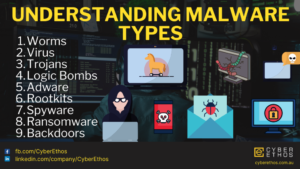Certainly, there are several emerging trends and technologies that can help improve your organization’s cybersecurity posture. Staying up to date with these developments can enhance your ability to protect against evolving threats. Here are some key trends and technologies to consider:
Zero Trust Security: Zero Trust is an approach that treats every user, device, and network connection as untrusted, even if they are inside the corporate network. It relies on continuous verification and least privilege access, enhancing security.
AI and Machine Learning: AI and ML are being used to detect and respond to threats more rapidly and accurately. They can analyze large datasets to identify patterns and anomalies, improving threat detection and incident response.
Quantum-Safe Encryption: With the potential threat of quantum computing, quantum-safe encryption algorithms are emerging to protect against quantum-based attacks on traditional encryption.
Cloud Security Posture Management (CSPM): CSPM tools help organizations monitor and maintain a secure cloud environment by identifying misconfigurations, vulnerabilities, and compliance issues.
Secure Access Service Edge (SASE): SASE combines network security and wide-area networking into a cloud-based service. It provides secure access to network resources for remote users and cloud-based applications.
Extended Detection and Response (XDR): XDR platforms unify and correlate security data across multiple security products and generate a centralized view of threats. This enhances threat detection and response capabilities.
Deception Technologies: Deception tools create decoy assets to confuse and divert attackers. They can provide early detection and additional security layers.
5G Security: As 5G networks roll out, new security challenges and opportunities arise. Implementing security measures for 5G infrastructure is crucial.
Multi-Factor Authentication (MFA) and Biometrics: Strong authentication methods, including MFA and biometrics, are increasingly used to enhance user access security.
Ransomware Mitigation and Recovery Tools: New tools and services are emerging to help organizations mitigate and recover from ransomware attacks.
Blockchain for Security: Blockchain technology is being explored for securing transactions, identity management, and supply chain security.
Security Orchestration, Automation, and Response (SOAR): SOAR platforms automate and orchestrate security tasks, reducing response times and improving efficiency.
Threat Intelligence Platforms: Advanced threat intelligence platforms collect, correlate, and analyze threat data to provide actionable insights for cybersecurity professionals.
Privacy-Preserving Technologies: Privacy-preserving techniques, like homomorphic encryption and confidential computing, protect data privacy while still enabling analysis.
5G and IoT Security: With the proliferation of IoT devices and the rollout of 5G, addressing security in these domains is crucial to protect against emerging threats.
DevSecOps: Integrating security into the DevOps process ensures that security is built into applications and infrastructure from the start.
Container Security: Tools and practices for securing containerized applications are emerging as organizations adopt containerization technologies.
Regulatory Compliance Solutions: Solutions that help organizations comply with data protection regulations like GDPR, CCPA, and others are continually evolving.
Behavioral Analytics: Analyzing user and entity behavior to identify anomalies and potential threats is becoming more advanced and accurate.
Security Awareness Training: New approaches and technologies for employee security training are emerging, focusing on interactive and engaging content.
To improve your organization’s cybersecurity posture, it’s essential to stay informed about these emerging trends and technologies and assess their applicability to your specific needs. However, it’s equally important to understand that while technology plays a critical role, a holistic security strategy should encompass people, processes, and technology to address the full spectrum of cybersecurity challenges.





